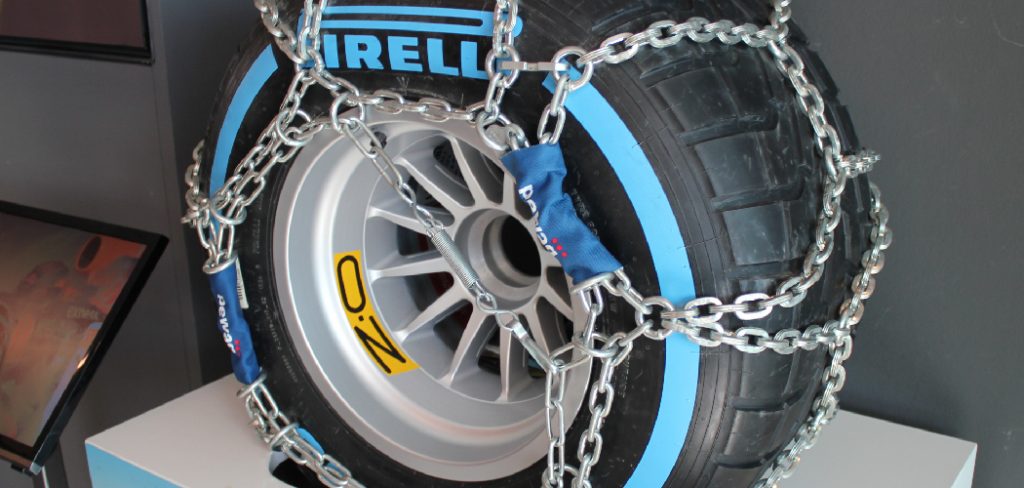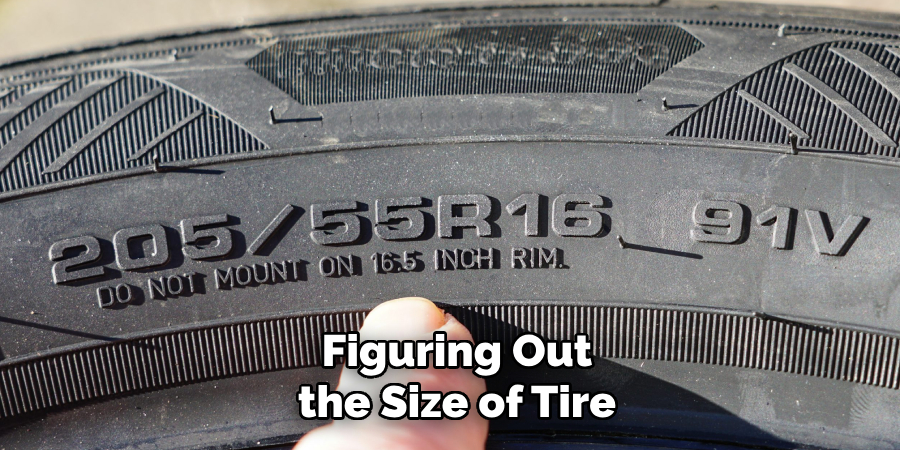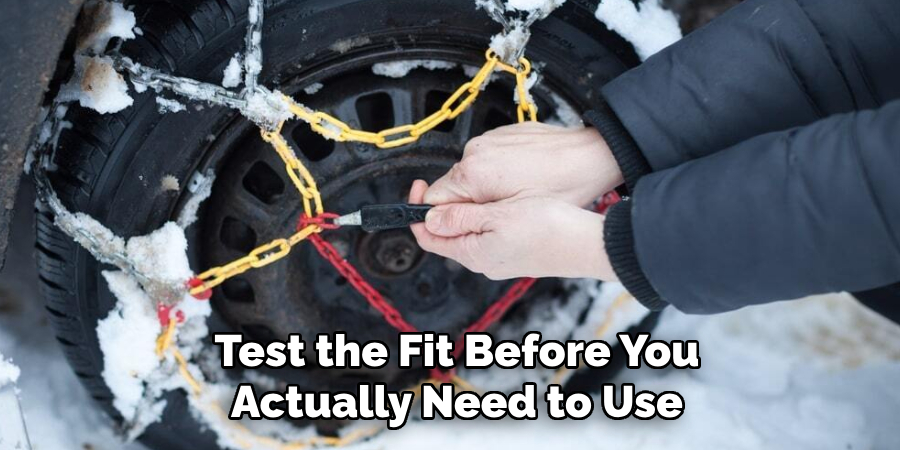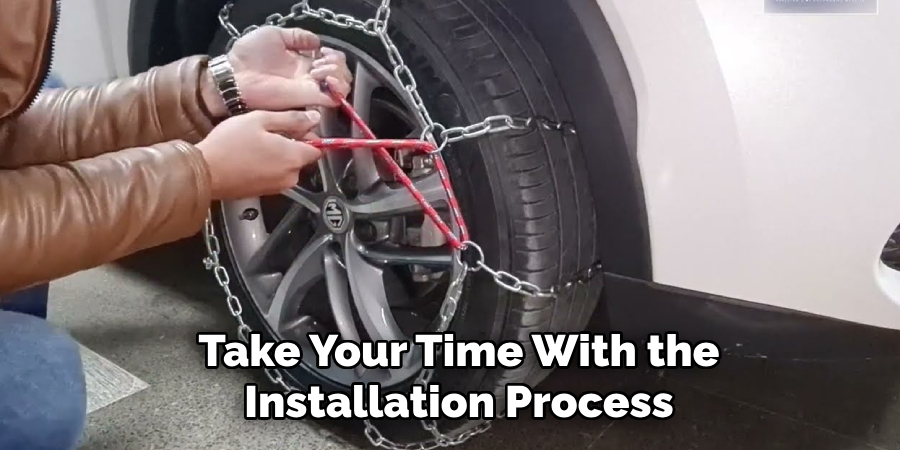Winters can be harsh and unpredictable, especially for those living in areas with heavy snowfall.

As much as we may try to prepare ourselves for the cold season, sometimes it still catches us off guard. A critical aspect of being winter-ready is making sure our vehicles are equipped with proper tire chains. These handy devices provide extra traction on icy roads, ensuring our safety while driving in treacherous conditions. However, choosing the right tire chain size can seem daunting for many people, but fear not!
In this blog post, we will guide you through determining the correct size of tire chains for your vehicle. So buckle up and get ready to learn how to figure out size of tire chains like a pro!
What Will You Need?
Before we get started, there are a few things you will need to have on hand:
- A measuring tape
- Your vehicle’s tire size (can be found in the owner’s manual)
- A bit of patience and focus
With these tools at your disposal, you’ll be all set to determine the perfect size of tire chains for your vehicle.
9 Easy Steps on How to Figure Out Size of Tire Chains
Step 1: Measure Your Tires
The first step in figuring out the size of tire chains is to measure your tires. You will need to know the diameter, width, and aspect ratio of your tires – these measurements are crucial for selecting the correct tire chains.

The diameter is the total distance from one end of the tire, the width is the distance from one sidewall to the other, and the aspect ratio is the height of the tire’s cross-section to its width. Use a measuring tape to get these measurements accurately. This information may also be found on the sidewall of your tires.
Step 2: Check the Tire Size Label
Now that you have your tire measurements, it’s essential to cross-verify them with the tire size label on your vehicle. This label is usually on the driver-side door jamb, inside the glove box door, or within the gas tank hatch. It will provide you with the factory recommended tire size and chain type for your vehicle. This information is critical as it helps ensure you choose tire chains that will fit perfectly and perform optimally.
Step 3: Cross-Referencing Measurements
Once you have the accurate measurements and the recommended tire size from your vehicle’s label, cross-reference these details with a tire chain size chart. These charts are commonly available online or at automotive stores. The graph will list various tire sizes and the corresponding chain sizes suitable for them.
Find your tire size on this chart and note the chain size that correlates with it. This is an important step in figuring out the correct size of tire chains for your vehicle. Make sure to take your time and double-check your findings to avoid any potential discrepancies.
Step 4: Check the Manufacturer’s Recommendations
After determining a suitable tire chain size, it’s essential to validate your findings by checking the manufacturer’s recommendations. Visit the tire chain manufacturer’s website or consult their manuals to find the recommended chain size for your specific tire dimensions.
Manufacturers often provide specific recommendations based on the type of vehicle, tire size, and driving conditions. This step helps ensure the chain’s compatibility with your tires and enhances your safety while driving in snowy or icy conditions.
Step 5: Testing the Fit

After acquiring the tire chains based on your measurements and the manufacturer’s recommendations, it is advisable to test the fit before you actually need to use them. To do this, practice installing them on your tires in a safe and dry location. Ensure the chains fit snugly, not too tight or loose, over the tire tread.
Check for even distribution of chains around the tire and ensure there’s no damage to the tire sidewall. The chains should sit flat against the tire without any bulges or gaps. If the chains don’t fit properly, you may need to get a different size. Remember, a proper fit is key to effective performance and safety on icy roads.
Step 6: Adjusting the Chains
After testing the fit, the chains need some adjustments for an optimal fit. Most tire chains come with tensioners or adjusters, which help tighten them for a snug fit. Follow the manufacturer’s instructions on how to use these devices. Usually, these include fitting the tensioner onto the chain, distributing it evenly around the tire, and then pulling it tight.
Make sure the chains are still evenly distributed after adjustment. This step ensures that your chains are as effective as possible on the road. If you find that even after adjusting, the chains do not fit as they should, you may need to consider returning them and getting a different size.
Step 7: Consider Road Conditions and Regulatory Restrictions
When figuring out the size of your tire chains, it’s essential to consider the road conditions you’ll be driving in and any regulatory restrictions in your locale. Some regions have specific laws about the use of tire chains, including limitations on chain size and type. This information can usually be found on the local Department of Transportation’s website.
For road conditions, if you’re frequently driving on icy or snowy roads, you might require a different size or type of chain compared to someone driving on a highway that’s occasionally snowy. Always consider these factors while selecting the size of your tire chains.
Step 8: Seek Professional Help if Needed

Even after meticulous measurements, cross-referencing, and testing, you might still need some clarification about the correct tire chain size for your vehicle. In such cases, don’t hesitate to seek professional help. Visit a local automotive store or a car dealership and ask for advice. Experts in these establishments have ample experience and knowledge to assist you in making the right choice.
Step 9: Regular Maintenance and Storage
Once you have the correct tire chains for your vehicle, regular maintenance and proper storage are vital to their longevity and effectiveness. After each use, remove the chains and rinse them off with water to remove any salt, sand, or other debris that may have accumulated. Allow them to dry properly before storing them to prevent rusting.
Always store your tire chains in a cool, dry place from direct sunlight. This will prevent any damage from heat or moisture. Inspecting your chains for any wear and tear before and after each use is also a good practice. If you notice any damage, replace the chains immediately to ensure your safety.
By following these steps, you can quickly figure out the correct size of tire chains for your vehicle. Always prioritize safety and follow the manufacturer’s recommendations when choosing tire chain sizes. Stay safe on the roads this winter!
5 Things You Should Avoid
Avoid 1: Neglecting to Check Fit Regularly
Even if your tire chains fit perfectly when installing them, it’s essential to check their fit periodically, especially after a long drive. Chains can loosen over time, and a loose chain can damage your vehicle’s tires.
Avoid 2: Ignoring Local Laws and Regulations
Only some regions allow the use of tire chains. Before you set out on your journey, familiarize yourself with local laws about tire chains.
Avoid 3: Choosing Chains Based on Price Alone
While it might be tempting to opt for the cheapest tire chains available, remember that you are investing in your safety. Choose high-quality chains that fit your vehicle correctly, even if they cost a little more.
Avoid 4: Rushed Installation

Installing tire chains can be a tricky process that takes time to master. Take your time with the installation process, especially if you’re new.
Avoid 5: Failing to Maintain Your Tire Chains
Proper maintenance can extend the lifespan of your tire chains and improve their performance. After use, clean your chains thoroughly to remove any debris that might have accumulated. Store them properly in a cool, dry place to prevent damage and ensure they’re ready for use when you need them next.
By avoiding these common mistakes, you can ensure that your tire chains are the correct size and properly maintained for optimal performance and safety.
Conclusion
In conclusion, how to figure out size of tire chains may seem overwhelming at first, but armed with the knowledge and methods discussed in this post, you should be well-equipped to tackle this task with confidence. Remember to always consult your vehicle’s manual for specific recommendations and to consider factors such as terrain and usage before making a final decision on which size tire chains to purchase.
Size matters regarding tire chains, so remember its importance in ensuring safe and smooth winter driving conditions. Furthermore, remember the various types of chains available and how each one may impact your driving experience. With some research and careful consideration, you can find the perfect fit that meets your needs and gives you peace of mind during those cold and snowy days.
So don’t let the size of tire chains hold you back from enjoying all that winter has to offer – use these tips and tricks to ensure your vehicle is equipped for whatever Mother Nature throws your way.

